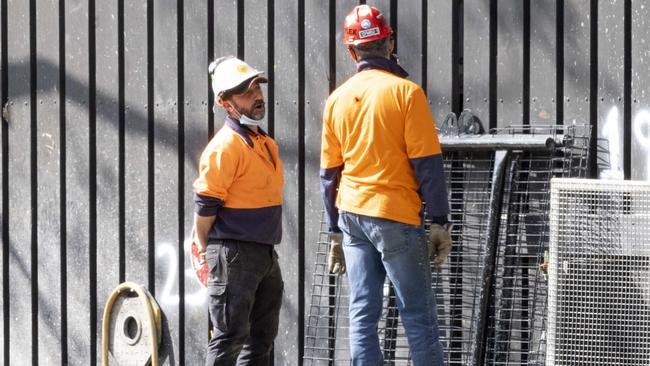NAB CEO Ross McEwan treading cautiously on business lending risks, as distress edges up
NAB chief Ross McEwan says an increasing number of businesses are enduring periods of stress, particularly in sectors exposed to a slowdown in the economy and demand.

National Australia Bank chief Ross McEwan says an increasing number of businesses are enduring periods of stress, particularly in sectors exposed to a slowdown in the economy and demand, but the bank is yet to see a return to 2019 levels.
Mr McEwan noted the nation’s biggest business lender was keeping a closer watch on the retail, construction, commercial real estate, tourism and hospitality industries as rate hikes filtered through the economy and consumer spending was reined in.
“They are the ones (sectors) when the consumer stops spending they have the most difficulty,” he said in an interview. “Those are the sectors that tend to have the biggest impact, if things really start to slow down.
“There’s a small amount of increase but it’s nowhere near, even back up to, the level of 2019.”
Of NAB’s $615bn total loan exposures relating to businesses, the exposures to those potentially riskier sectors total $84bn.
NAB identified $8.8bn of “higher risk balances” in its business loan book, where customers were deemed to have a greater than 2 per cent probability of default and the loan was not secured by assets.
NAB’s results showed business loans in the retail sector that were 90 days or more past due in the past six months rose to $133m as at March 31, from $122m in the prior six months.
Construction, commercial real estate, tourism and hospitality loans 90-days or more past due also edged up.

Those details come as the economy has been hit by a spate of collapses in the building and construction sector, and a string of retail companies call in administrators. The latter include administrators being called in at beauty company BWX last month and Tribe Breweries collapsing in February.
Mr McEwan also pointed out that NAB’s growth across the riskier sectors was being more closely monitored, and since early 2020 the bank had seen slower growth than in other industry groups.
The highlighted sectors have seen their weighting as a proportion of NAB’s total business loan book fall to 13.7 per cent, from 16.7 per cent in 2020.
According to the accounts the bank’s small and medium business lending book was diversified, with less than 20 per cent exposure to discretionary retail-related sectors. The documents also outlined NAB’s exposure to commercial real estate as a percentage of total lending had been on a decline since September 2009, and was currently below 10 per cent.
NAB’s business and private banking unit – the biggest contributor to the bank’s first-half profits – reported a 19.9 per cent jump in cash earnings to $1.71bn for the six-month period, versus a year earlier. The personal banking unit, where NAB retreated from participating in fierce competition for mortgages, posted a 0.4 per cent decline in earnings to $785m, as fierce home loan competition and a rise in credit impairments weighed on the division’s result.
That division was an outlier as the bank posted improved interim results in its corporate and institutional banking arm and its New Zealand division.
NAB does expect a slower outlook for business loan growth, with the bank tipping it will decline to 3.9 per cent this financial year, from 13.3 per cent a year earlier.
Separately, NAB’s accounts showed last year a Federal Court class action was filed against the bank by subcontractors regarding the bank’s alleged conduct relating to the collapse of Walton Construction. The allegations centre on NAB’s conduct prior to the collapse of Walton Construction allegedly contributing to losses incurred by subcontractors after the liquidation.
The bank is defending the case.






To join the conversation, please log in. Don't have an account? Register
Join the conversation, you are commenting as Logout